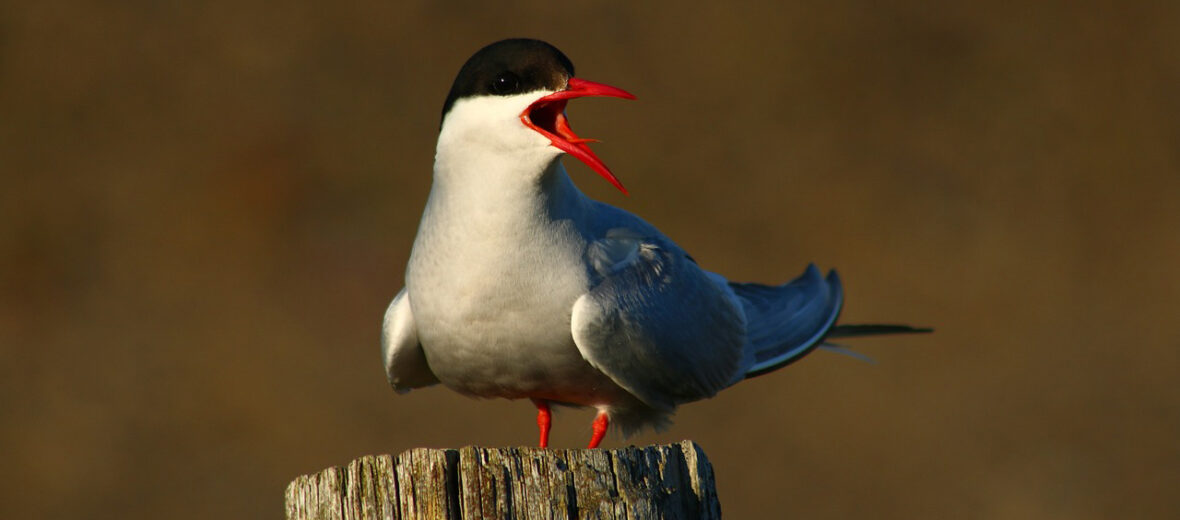
The Arctic tern, known in part for having the longest migratory route of any animal in the world, travels up to 55,923 miles each year! These oceanic birds make stops in numerous countries in the northern and southern hemisphere. Even though they face the threats of overfishing; hunting; trapping; invasive species, and with them disease and predation; and climate change, which has an effect on their habitat and food sources, these birds are still abundant and listed as Least Concern by the IUCN. Their numbers are decreasing though.
First the Stats…
Scientific name: Sterna paradisaea
Weight: Up to 3.5 ounces
Length: Up to 16 inches
Wingspan: Up to 30 inches
Lifespan: Up to 34 years
Now on to the Facts!
1.) Due to their extended migratory route, they end up seeing 2 summers each year.
2.) When summer nears in the in the Southern Hemisphere, terns migrate southward and nest right up to the Antarctic Ice lines.
3.) Since they migrate each year to stay warm, they live in a constant summer.
4.) During their long migrations they will often rest right on the water’s surface or on larger floating debris.
5.) Arctic terns are social creatures that dwell in large terneries.
But wait, there’s more on the Arctic tern!
6.) These birds are also very vocal creatures, constantly communicating with one another.
7.) A group of terns is called a straightness, ternery, and “U” of terns.
Did you know…?
These critters can fly at speeds of up to 25 mph.
8.) Arctic terns are diurnal (active during the day).
9.) Capelins, crayfish, smaller fish, sand eels, and sand launaes are all on the menu.
10.) Arctic terns are monogamous (mate for life).
But wait, there’s still more on the Arctic tern!
11.) During their mating routine, a male performs what is referred to as a “fish flight”, carrying caught fish in the air while producing screaming sounds (yes, they are able to call with their mouth full of prey), after this aerial courtship the male lands and offers his prey to the female.
12.) These birds nest every 1 – 3 years.
Did you know…?
Chicks are tended to, fed, and protected by both parents for the initial 10 days of life. After up to 15 days the chicks are able to fly.
13.) Nests are simply hollows dug into the sandy substrate.
14.) Females lay up to 3 eggs that hatch in up to 22 days.
15.) The chicks are neither altricial (born blind and helpless) nor are they precocial (self sufficient). They begin moving about the nest up to 3 days after hatching.
But wait, there’s still a little more on the Arctic tern!
16.) Hedgehogs and introduced rats raid their nests and attack & destroy their eggs and kill their nestlings.
17.) Humans disrupt their nesting and resting sites which drives these birds away and make it harder for them to nest.
Did you know…?
In an event known as a dread moment, a ternery will all become completely silent for a short time, just before flight.
18.) Due to their summer to summer migratory lifestyle, these birds witness more sunlight than any other known animal on the planet.
19.) Arctic terns average up to 1,491,291 miles travelled during their lifetime. To put that in perspective, the moon is less than 248,548 miles away from earth.
20.) To save energy during their long and exhausting flight, these birds will glide for long distances.
But wait, there’s still a tad more on the Arctic tern!
21.) Just like hummingbirds, Arctic terns have the ability to free fly, or hover in mid air.
22.) Foxes, cats, gulls, petrels, and skuas all prey on these terns.
Now a Short Arctic Tern Video!
Be sure to share & comment below! Also, check out the Critter Science YouTube channel. Videos added regularly!
Want to suggest a critter for me to write about? Let me know here.
Some source material acquired from: Wikipedia & IUCN



